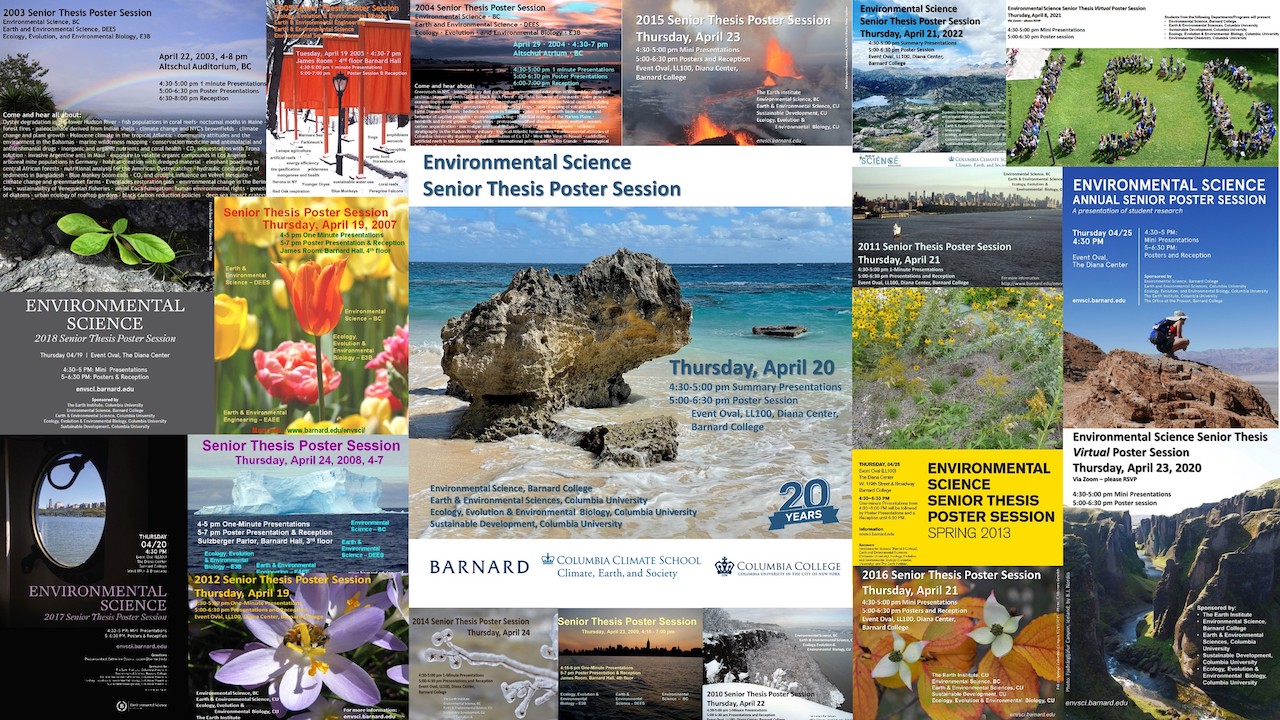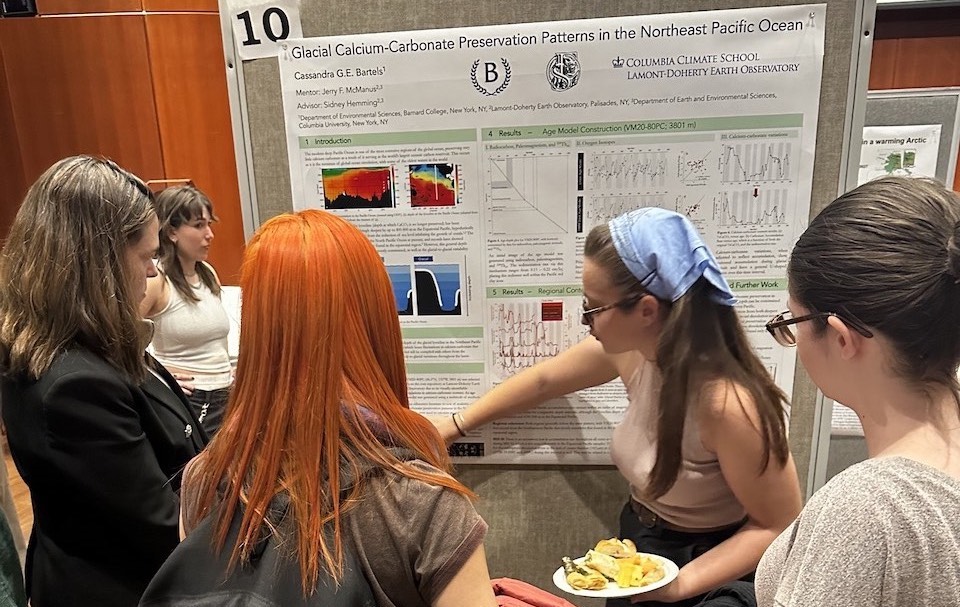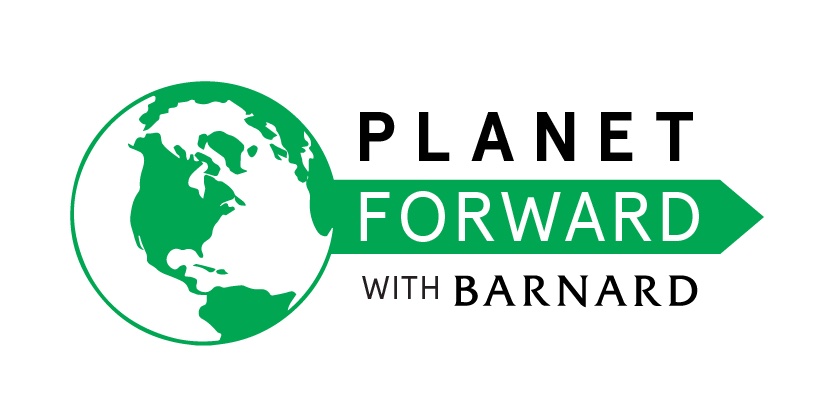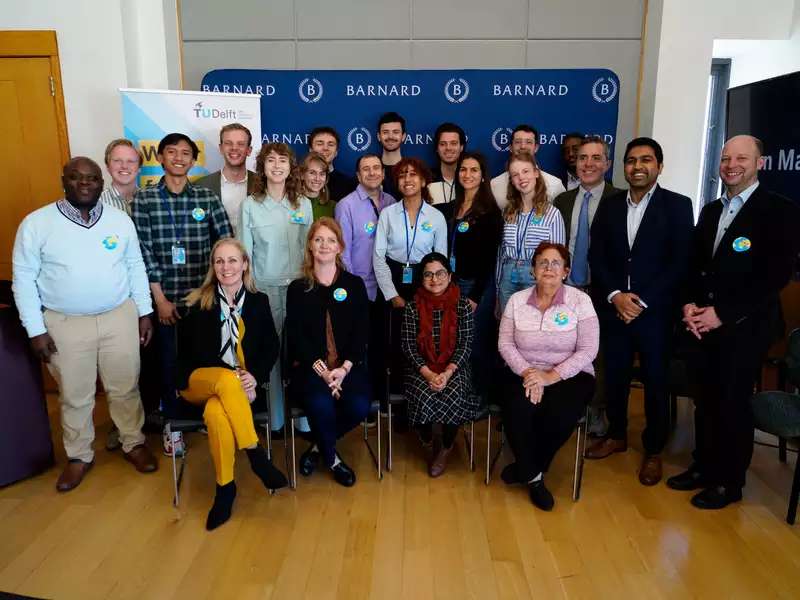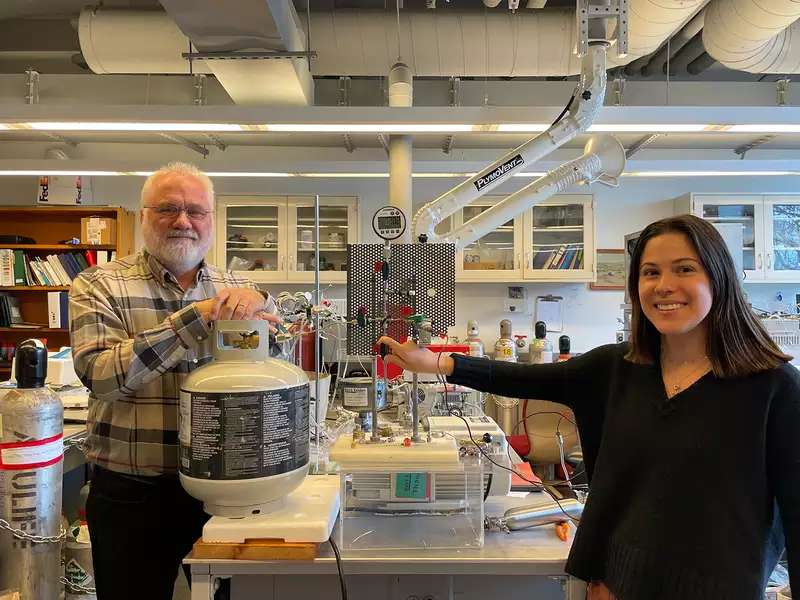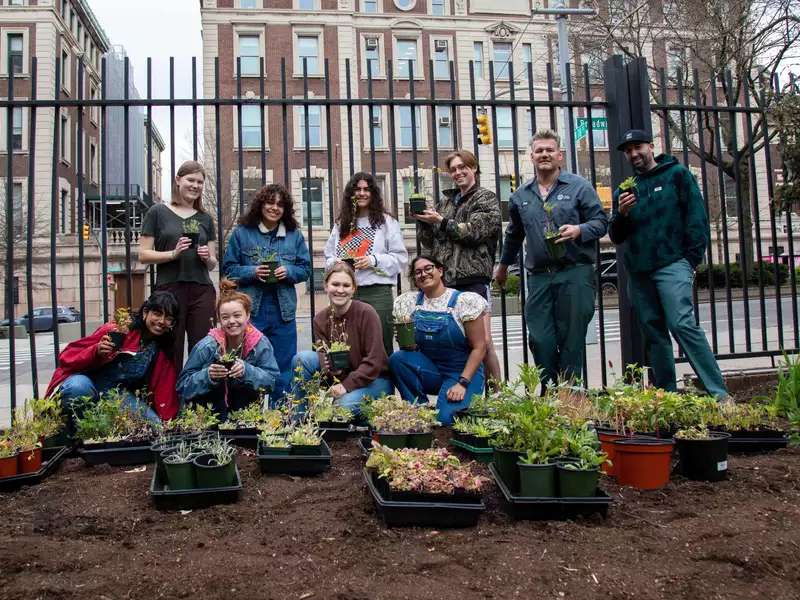Zoe Perloff ’23 worked on identifying a new species of “zombie” fungus. Noyna Roy ’23 studied the barriers to solar energy use in Singapore. Lauren Kahme ’23 interrogated the challenges around extreme heat planning in northern Manhattan. They were some of the dozens of students who presented their work at Barnard’s 2023 Environmental Science Senior Thesis Poster Session, demonstrating a vast array of interests and discoveries.
“It’s time to celebrate the accomplishments of our amazing students who have been working on their projects for a year, sometimes longer,” said Martin Stute, Alena Wels Hirschorn ’58 and Martin Hirschorn Professor in Environmental and Applied Sciences and co-chair of the Environmental Science Department.
Poster sessions are a tradition among the most respected research fields, a mark of accomplishment, and a chance to introduce exciting new scientific knowledge in an interactive way.
“This is a format that has been around for a long time at professional meetings, but it’s not very common in classroom environments to have a poster session that’s professionally done,” said Stute, who coordinates the Barnard/Columbia Senior Environmental Science Seminar.
The annual poster session marked a milestone this year — its 20th anniversary. The program began in 1994 when Barnard and Columbia science faculty teamed up to support the interests of students who were already doing independent studies on an ad hoc basis. Since then, the seminar has grown, and today it brings together Barnard’s Environmental Science students with students from Columbia’s Department of Earth and Environmental Sciences, the Sustainable Development Program at the Climate School, and Ecology, Evolution, and Environmental Biology (E3B).
In 2003, the seminar faculty decided to hold its first senior research poster session to create a forum for students to present their methods and findings. On April 20 of this year, the poster session presenters and their family members and friends packed the Diana Event Oval on campus to celebrate this meaningful rite of passage.
The first 40 minutes of the two-hour session featured lightning-round introductions, with each student stepping on stage to deliver 30-second summaries of their projects. Afterward, students went to their respective posters and described their work to curious audience members.
“I’m so excited to be here and to have a place to [share] what we’ve been working on with the wider public,” said Cassandra Bartels ’23. Her project involved studying the way calcium carbonate is stored in the northeastern Pacific Ocean.
At a poster displayed nearby, Eden Halpert ’23 described her research on soil chemistry and arsenic mobilization in rice paddies. Due to its flooded growth conditions, rice is more enriched in arsenic than other grains, such as wheat or barley. As rice provides over 50% of calories consumed in Asia, arsenic concentration is a major public health issue linked to chronic and terminal diseases. Halpert examined the effect of zinc fertilization on inhibiting arsenic uptake in rice and also the role rice plays in the economics, public health, and government regulation policies of Vietnam.
"As part of my study, I was able to go to Vietnam and work with farmers,” said Halpert, who won the 2022 Irene Tilenius Bloom Prize, a fellowship that supports student research. “It was wonderful to see how my work can impact the world.”
